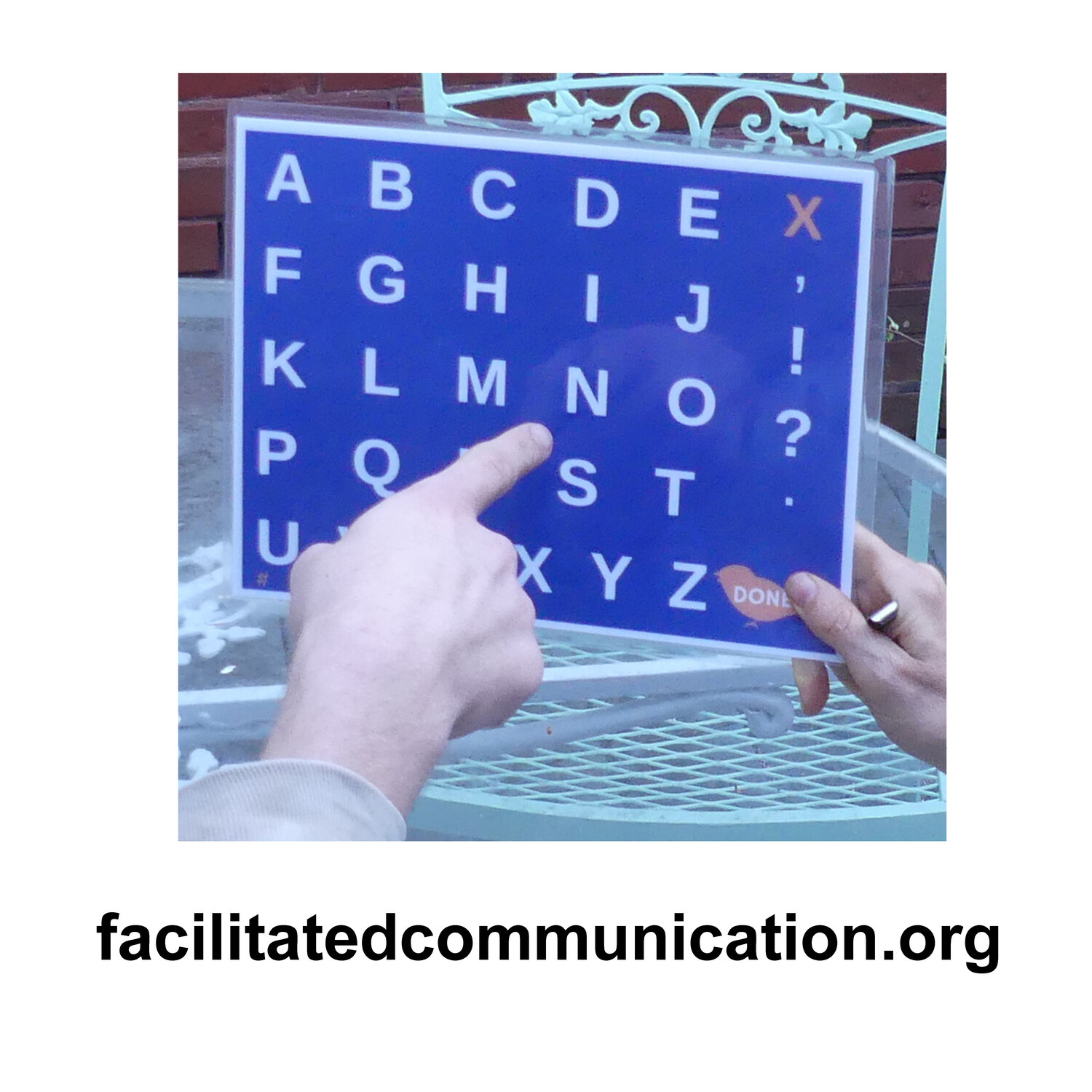Why FC isn’t AAC for people with disabilities, but only for their facilitators
…and why influencing someone’s thoughts is different from replacing their thoughts with your thoughts
Proponents of Facilitated Communication and its variants (Rapid Prompting Method and Spelling to Communicate) blur two lines:
The line between Facilitated Communication and Augmentative and Alternative Communication (FC and AAC)
The line between influencing someone’s thoughts and replacing their thoughts with your thoughts
In some ways, these lines are easy to blur.
Let’s consider, first, AAC vs. FC. AAC includes any form of communication that a person uses as a supplement or substitute for speech: sign language, typing on a keyboard, assembling and handing over pictures (as in Picture Exchange Communication System, or PECS), or pointing to pictures or icons on speech-generating devices like Proloquo2Go and the Dynavox Compass or their tablet-based counterparts.
Its very name, “facilitated communication”, suggests that FC is nothing more than a subtype of augmentative and alternative communication. Except, that is, when we consider the implicit notion of a facilitator. In AAC, if there is anything that might be called a facilitator, that “facilitator” is generally nothing more than the medium of communication itself: e.g., the PECS pictures or the Proloquo2Go icons and speech generator. The only time an actual human being plays an active role in facilitating the other person’s message is in some very specific subtypes of what’s called “indirect selection.”
Indirect selection, designed for individuals who lack the fine motor control to point to specific items in a picture array, works like this. Through some sort of scanning process, the communication partner or AAC program presents or highlights one specific item at a time. When the desired item comes up, the AAC user selects it. Typically, she selects it by pushing on some sort of switch. But in cases where this isn’t possible, she and her communication partner come to an agreement on a particular vocalization or motor movement (blinking, grunting, nodding, etc.) that signals that she’s making a selection.
In most cases of AAC, therefore, there is little opportunity for the communication partner to unwittingly influence the AAC user’s selections.
On top of this, the typical AAC user isn’t dependent on a few select people to serve as her partners. Nor do her partners need to hold up the board for her, touch her body, hover within visual range, and/or orally prompt her, in order for her to make her selections. If they leave the room and new people enter, she does not temporarily lose her capacity to use her device.
AAC devices are typically placed on stationary surfaces and users don’t require communication partners to hover nearby.
RPM/S2C users are only able to communicate messages when one of a small number of designated “partners” holds up the letterboard and/or hovers nearby.
Given what we know about FC, there is one sense, and one sense only, in which FC counts as a form of AAC. FC is AAC for the facilitators. Via a combination of the Ideomotor Illusion, Action Projection, their partner’s extended index finger, and the AAC device, the facilitator (also called the communication/regulations/emotional support partner) unwittingly communicates thoughts that they think are coming from the person they are facilitating/regulating/emotionally supporting. The facilitators think they are providing AAC to the person with disabilities, but really it is the other way around.
Let’s turn now to the distinction between influencing someone’s thoughts and replacing their thoughts with your thoughts. Some pro-FC advocates like to point out that all communication involves influence. What I say is influenced by what you say to me. Conversations involve what some like to call a mutual “co-construction of meaning.”
But there’s a qualitative difference between this:
[A asks B how he’s doing]
B: I’m OK.
A: OK? That doesn’t sound so good. What’s going on?
B: Well, it’s been a long day.
[A influences how B characterizes “OK”.]
Versus:
[A opens up a manila envelope that first displays a picture of a cup to B and then displays a picture of a hat to C. B only sees the cup picture; C only sees the hat picture and thinks that B sees it too.]
A: What do you see in this picture?
B [typing, facilitated by C]: A hat.
[C replaces B’s thought about “cup” with her thought about “hat”.]
[From Prisoners of Silence]
“Hat” instead of “cup”? The only way to explain that as mere influence or co-construction of meaning—as opposed to one person replacing someone else’s thoughts with their own—is to posit some sort of telepathy between B and C.
Which, quite tellingly, is precisely what some FC proponents have ended up doing.



